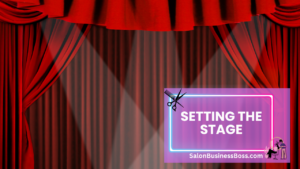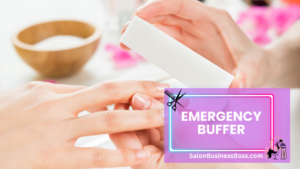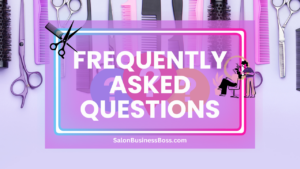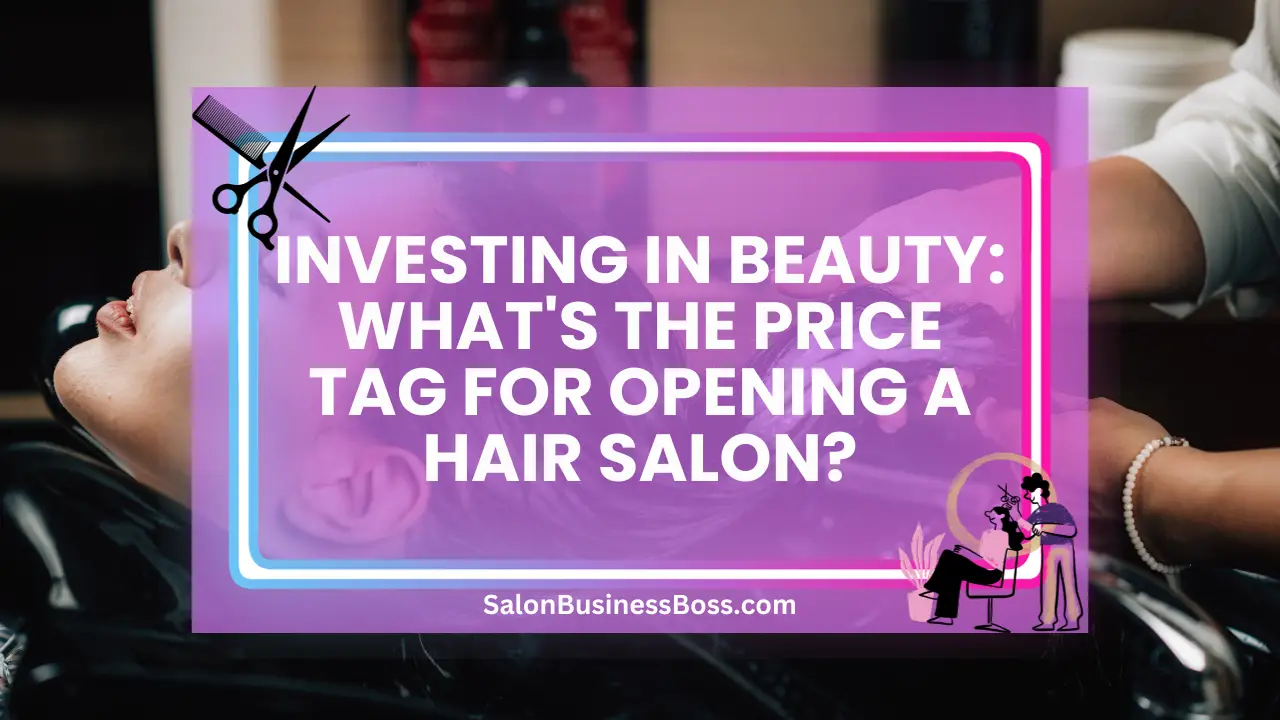Embarking on the journey to open your own hair salon is an exciting adventure, but it’s crucial to navigate the financial landscape with precision. From initial setup costs to ongoing operational expenses, we’ve got you covered. So, let’s grab our shears and start cutting through the numbers.
To open a hair salon, budgeting is key. Consider location, equipment, staffing, legalities, and marketing. Allocate wisely for a thriving venture. Your dream salon awaits.
In this article, we’ll delve into the key factors that influence the capital required to launch a thriving hair salon business.
Setting the Stage: Location Matters

Selecting the appropriate location serves as the initial and pivotal step when it comes to gauging the financial resources required for launching your very own hair salon. Your choice may involve considering a chic spot in the heart of downtown, a tranquil nook within a suburban strip mall, or even a quaint corner situated in a bustling neighborhood. It’s important to recognize that each of these options carries its own unique set of financial considerations, which encompass aspects such as rent, potential property enhancements, and the necessary permits to operate.
It’s imperative to be mindful of the significant fluctuations in costs that are tied to the geographical location you decide upon. To exercise prudence and foresight, a suggested course of action involves allocating approximately 10-15% of your comprehensive budget toward securing an ideal physical space. This particular allocation of funds serves as a strategic move, ensuring that you reserve a substantial portion of your resources for the purpose of acquiring a space that resonates harmoniously with your intended customer base, all while adhering to your predetermined financial boundaries.
By affording due attention to this pivotal facet of your hair salon’s establishment, you are taking a momentous leap towards crafting a robust bedrock for your business, one that stands firmly within the contours of your available budget. This discerning approach positions you favorably on the path to fashioning a thriving hair salon that is well-attuned to the prevailing financial landscape.
Read more about: Crafting a Dynamic Action Plan for Your Beauty Salon
Decking the Halls: Salon Equipment and Décor
Creating a welcoming and inviting atmosphere in your salon is crucial for setting the right tone for your customers. The interior design, from the chairs where clients sit to the stations where stylists work their magic, along with the quality hair care products you offer, plays a pivotal role in leaving a lasting impression.
In your budget planning, be sure to include expenses related to various items such as styling chairs, mirrors, hairdryers, wash stations, and other essential equipment. These components are the backbone of your salon’s functionality. Moreover, the ambiance you envision will significantly affect the costs tied to decorations. Whether you opt for a sleek and modern look or a lavish and opulent setting, the choice is yours, and your budget should accommodate this vision.
Allocating approximately 20-25% of your budget to cover equipment and décor is a prudent approach. By doing so, you’re making a strategic investment in ensuring that your salon radiates the desired ambiance that resonates with your clientele. Ultimately, this allocation supports your aim of creating a space that not only looks impressive but also reflects the character and vibe you want your salon to convey.
Team Power: Staffing and Training
The backbone of a thriving salon is its team – individuals armed with skill and unwavering dedication. Whether you’re embarking on this journey solo or assembling a group, it’s crucial to anticipate the financial aspects associated with wages, benefits, and continuous training. The competence of your stylists and support staff is pivotal, forming the bedrock of your enterprise.
Budgeting for staff compensation is a vital aspect. This encompasses salaries, allowances, and perks that make for contented employees. Alongside this, remember the importance of ongoing training. Industry trends evolve, and updating your team’s knowledge is essential to provide up-to-date services.
Your budget should carve out a sensible portion, approximately 25%, for staffing and training. This allocation underscores the significance of cultivating a capable team that can consistently deliver excellence. By earmarking these funds, you’re affirming your commitment to nurturing your staff’s potential and, in turn, enhancing the overall prowess of your salon. This strategic approach ensures that your investment extends not only to physical infrastructure but also to the talented individuals who breathe life into your vision.
Paperwork and Permits: Legal and Administrative Costs

While setting up your salon, there’s more to consider beyond the artistic flair and interior design. The realm of legalities and administrative responsibilities enters the scene, encompassing various costs such as business permits, licenses, insurance, and other obligatory elements. These components are like the regulatory backbone that ensures your salon functions seamlessly within the bounds of the law.
Business permits and licenses are akin to the green light that legitimizes your operations. Insurance safeguards against unforeseen mishaps, providing a safety net for both your business and clients. These might not be the most exciting parts of starting a salon, but they are the foundation for its smooth and lawful operation.
To avoid any future hiccups, earmark a portion of your budget – approximately 5-10% – to account for these legal and administrative necessities. This proactive approach shields you from potential costly complications that might arise if these aspects are overlooked.
By including these expenses in your budget, you’re establishing a solid framework for your salon’s journey, ensuring it’s equipped to navigate the complexities of legal compliance. While it might not be the glamorous side of the venture, it’s an indispensable one that lays the groundwork for your salon’s stability and long-term achievement.
Read more about: Crafting Style: Hair Salon Ideas on a Budget
Marketing Magic: Branding and Promotion
As your salon gets set to embark on its journey, getting the word out becomes a top priority. This is where the realm of marketing comes into play. Marketing costs cover various aspects like crafting your brand identity, building a website, managing social media, and creating promotional materials.
In today’s digital landscape, having a strong online presence is like a guiding beacon for potential clients. Your brand identity is what makes you stand out in a crowded market. Your website is a virtual door to your salon, and social media helps you engage with your audience. All of these elements play a role in attracting and keeping loyal customers.
When planning your budget, it’s a smart move to set aside a chunk – around 10-15% – for your marketing endeavors. This allocation ensures that your salon’s voice reaches the right ears and eyes. It’s not just about making noise; it’s about crafting a strategic communication plan that resonates with your target audience.
By dedicating resources to marketing, you’re investing in your salon’s visibility and reputation. It’s not just about putting your salon out there; it’s about carving a meaningful space for it in the minds of potential clients. In this digital age, marketing isn’t just an extra – it’s a cornerstone for connecting your salon with the people who need your services.
Operational Essentials: Utilities and Inventory
The operational foundation of a hair salon hinges on a consistent supply of utilities, the unsung heroes that encompass water, electricity, internet, and phone services. These seemingly mundane components are the pillars that underpin the seamless functionality of your salon, allowing it to cater to clients effectively.
While utilities are indispensable, operational costs don’t end there. The inventory you maintain, especially the range of hair care products you offer, demands ongoing attention and investment. These products aren’t just commodities; they are the tools that enable your stylists to create magic.
When you’re in the process of shaping your budget, it’s imperative to consider these operational essentials. Allocating a reasonable portion – roughly 10% – of your financial resources towards utilities and inventory is a strategic move. This allocation guarantees that you’re well-prepared to navigate the daily activities of your salon without encountering any hindrances.
Visualize it as a symphony of efficiency: utilities are the conductor that orchestrates the harmony, and inventory is the repertoire that allows each note to resonate. By reserving funds for these fundamental aspects, you’re fostering an environment where your salon can operate smoothly, providing services and experiences that encapsulate your brand’s essence. This prudent allocation secures the gears of your salon’s machinery, ensuring it remains finely tuned to meet the needs of your clients.
Emergency Buffer: Contingency Fund

In the intricate dance of business, it’s an undeniable truth that surprises await us around every corner. That’s where the concept of a contingency fund enters the picture – a financial reservoir strategically set aside to act as a safety net when unexpected hurdles emerge. Think of it as your shield against the unknown, ready to step in and provide support when you least anticipate it.
The notion is simple yet profoundly valuable. You allocate a portion – let’s say roughly 5-10% – of your comprehensive budget towards this contingency fund. This allocation isn’t merely a financial placeholder; it embodies your proactive approach to addressing unforeseen challenges that may arise along your salon journey.
Consider this fund as your guardian angel, ever-watchful and poised to come to your rescue. Whether it’s unforeseen equipment repairs, unexpected market fluctuations, or any other curveballs that fate might throw your way, your contingency fund is there to provide the resources necessary to navigate these situations with poise and resilience. It’s akin to having an ace up your sleeve, bolstering your salon’s capacity to uphold its commitment to excellence.
By establishing and allocating these funds, you’re essentially embracing the notion that while the road ahead may be dotted with uncertainties, your salon is fortified against them. This strategic move underscores your dedication to safeguarding the quality and reputation of your salon, ensuring that even amidst unexpected challenges, your business remains steadfast and poised for continued growth.
Read more about: Crafting Your Hair Salon Marketing Plan: Step by Step Guide
Conclusion
You’ve adeptly navigated the financial journey of launching a hair salon. Keep in mind that while these budget allocations provide a robust starting point, real expenses can differ based on factors like your location, business scale, and individual preferences. By carefully strategizing for each phase of your salon’s inception and operation, you’re positioning yourself for accomplishment in a fiercely competitive field. Now, stride forward, craft your haven of beauty, and let your entrepreneurial drive radiate as brilliantly as a flawlessly fashioned hairstyle.
Frequently Asked Questions

Q: How much does it cost to open a hair salon?
A: The cost varies based on factors like location, size, and services offered. Generally, it ranges from $50,000 to $250,000 or more.
Q: What are the ongoing expenses for a hair salon?
A: Ongoing expenses include rent, staff salaries, utilities, product inventory, marketing, and maintenance, which collectively ensure smooth operation.
Q: Do I need formal training to open a hair salon?
A: While formal training is not a legal requirement, it’s highly recommended. Proper training boosts your skills, credibility, and customer trust.
Q: How long does it take to break even in the salon business?
A: Breaking even varies but typically takes 1 to 3 years. Efficient management, quality service, and effective marketing can expedite this timeline.
Q: What licenses and permits are necessary for a hair salon?
A: Required licenses and permits depend on your location. Common ones include a business license, cosmetology license, and health department permit. Consulting local authorities is crucial.
To learn more on how to start you own salon checkout my startup documents here.
The information provided by SalonBusinessBoss.com (“The Site”) is for general informational purposes only. All information on the Site is provided in good faith, however, we make no representation or warranty of any kind, express or implied, regarding the accuracy, adequacy, validity, reliability, availability or completeness of any information on the Site. Under no circumstance shall we have any liability to you for any loss or damage of any kind incurred as a result of the use of the Site or Reliance on any information provided on the Site. Your use of the Site and your reliance on any information on the Site is solely at your own risk. This blog post is for educational purposes only and does not constitute legal advice. Please consult a legal expert to address your specific needs. Terms and Conditions. (https://salonbusinessboss.com/terms-conditions/)

About the author. Entrepreneur and Salon Business Fan.
Hi! I am Shawn and I am a happy individual who happens to be an entrepreneur. I have owned several types of businesses in my life from a coffee shop to an import and export business to an online review business plus a few more and now I create online salon business resources for those interested in starting new ventures. It’s demanding work but I love it. I do it for those passionate about their business and their goals. That’s why when I meet a salon business owner, I see myself. I know how hard the struggle is to retain clients, find good employees and keep the business growing all while trying to stay competitive.
That’s why I created Salon Business Boss: I want to help salon business owners like you build a thriving business that brings you endless joy and supports your ideal lifestyle.

